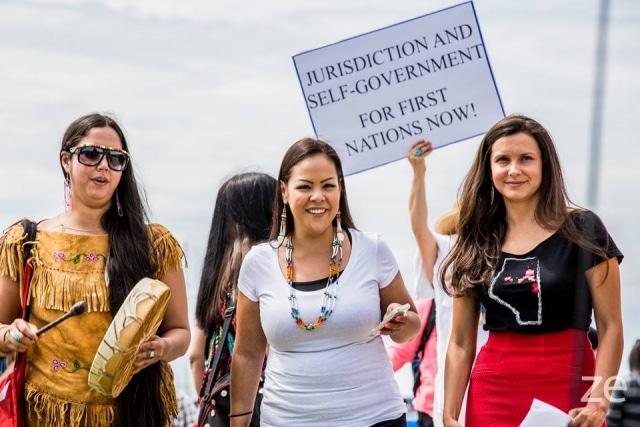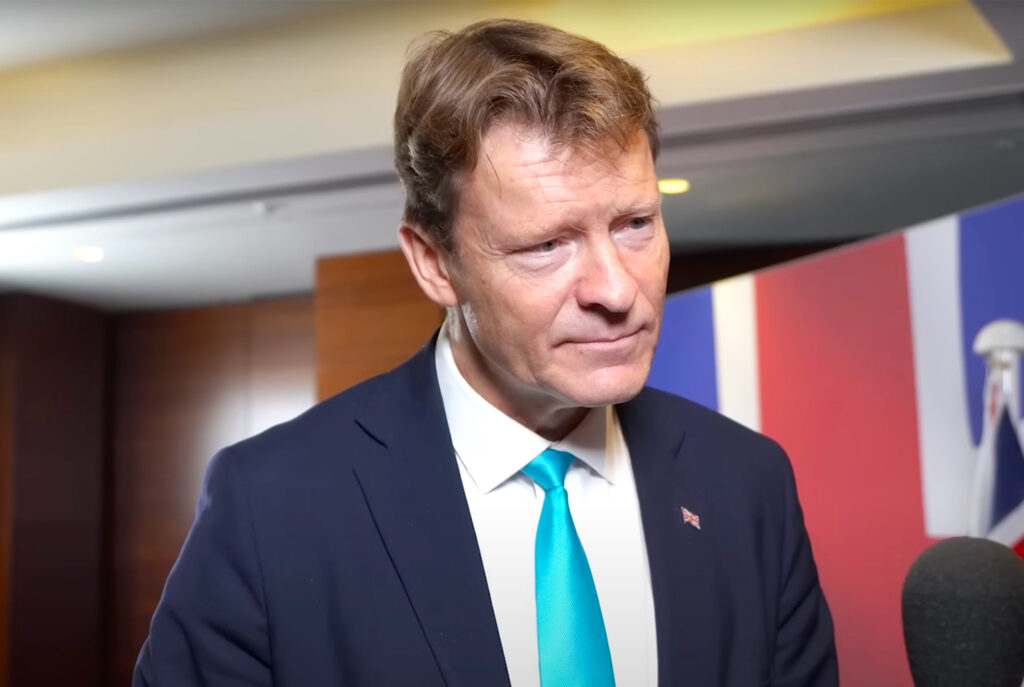The Government of Canada approved the Enbridge Northern Gateway pipeline Tuesday, six months after the Joint Review Panel recommended the pipeline be built subject to 209 conditions.
Natural Resources Minister Greg Rickford said in a statement: “In December 2013, the Joint Review Panel found that construction and operation of the Northern Gateway Pipelines project is in the public interest, subject to 209 conditions being met by the proponent. After carefully reviewing the report, the Government accepts the independent Panel’s recommendation to impose 209 conditions on Northern Gateway Pipelines’ proposal.”
“Today constitutes another step in the process,” Rickford said, adding Enbridge committed to working with “aboriginal groups and local communities along the route.”
First Nations Reignite Opposition Across B.C.
First Nations are nearly unanimously opposed to the construction of the pipeline, however, and it is unclear how either Enbridge or the Harper government might address those concerns, steeped as they are within a constitutionally enshrined aboriginal rights framework.
In total, 130 First Nations have publicly rejected the project.
According to the Gitga’at Nation, the panel failed to legitimately consult First Nations during the review process, meaning the entire process did not meet the federal government’s legal duty to meaningfully consult aboriginal groups. How that conundrum can be remedied after the fact is anyone’s guess.
Upon announcement of the federal approval of the pipeline, a large group of First Nations, Councils and Assemblies launched a legal suit against the Government of Canada, saying “we will defend our territories whatever the costs may be.”
“This project, and the federal process to approve it, violated our right and our laws,” the groups stated in a press release. “We are uniting to defend our lands and waters of our respective territories. Our rights and laws compel us.” The groups include Gitxsan, Haisla, Heiltsuk, Tsleil-Waututh Nation, Wet’suwet’en First Nation, the B.C. Assembly of First Nations and Coastal First Nations among many others.
This Friday, the Gitga’at First Nation will string a colourful knit rope across the Douglas Channel, the export route of Northern Gateway tankers, in symbolic protest of the project.*
Legal Challenges Advance
In addition, the panel’s report was met with several legal challenges that addressed ongoing concerns with federal obligations to species at risk, such as caribou and the humpback whale (although, in what conservation groups saw as a brazen move, the federal government downgraded the status of the humpback whale).
The Environmental Law Centre (ELC) announced today it will file a suit challenging the pipeline’s approval on behalf of the Federation of B.C. Naturalists (B.C. Nature).
“Filing this lawsuit will ensure that the Federal Court of Appeal is able to hear and consider arguments relating to all of the various flaws and deficiencies associated with the Northern Gateway approval process,” Chris Tollefson, ELC executive director and B.C. Nature’s lawyer, said.
“We cannot stand by and allow Cabinet to approve this ill-conceived project on the basis of a JRP report that is so flawed and incomplete,” Kees Visser, President of B.C. Nature, said.
Majority of British Columbians May Have Final Say
British Columbians have also demonstrated on numerous occasions their majority opposition to the project. Most recently a Bloomberg-Nanos poll showed 67 per cent of British Columbians wanted the project either rejected or delayed for further review.
Yesterday at a press conference, the Dogwood Initiative, a democracy group in B.C., announced the project’s approval would be met with a citizen’s initiative – a province-wide vote that could oust the project by popular request. The Dogwood Initiative, along with several other environmental, First Nations, citizen and legal groups, will organize the vote, handing decision-making power once and for all to British Columbians.
The initiative, called “Let BC Vote,” already has 150,000 signatures.
The citizen’s initiative tool was successfully used in 2010 to oust the Harmonized Sales Tax (HST) pushed through by the Liberal government.
When it comes to gaining the approval of British Columbia, some of Premier Christy Clark’s five conditions have yet to be met, including securing B.C.’s ‘fair share’ of benefits from the project. But perhaps more significantly, in April, residents of Kitimat, the proposed terminus of the pipeline and start of the export tanker route, voted ‘no’ to the project in a local plebiscite, showing even those who stand to gain the most don’t support Enbridge in its ambitions.
209 Conditions Perhaps Most Significant Obstacle
As DeSmog Canada previously reported, the 209 conditions outlined by the National Energy Board (NEB) might ultimately represent the largest obstacle to the pipeline’s construction.
Changes to the NEB Act in 2012 (in the passing of the infamous Omnibus Budget Bill C-38 which saw the elimination of several environmental laws) made project conditions legally-binding, meaning they cannot be discarded by government as happened with the Mackenzie Gas Project. Although cabinet still holds the power to supplement or alter conditions in certain circumstances.
The 209 conditions fall into three phases: pre-construction, construction and pre-operation, and ongoing operations. To fulfill the 209 conditions, Enbridge will have to demonstrate to the NEB that the full requirements are being met throughout all phases of the project.
DeSmog Canada’s Heather Libby deconstructed the conditions in a previous post, outlining conditions specific to watercourse crossings, animal habitat, marine spill prevention and cleanup and shipping agreements.
Without all of the considerable legal challenges and technical difficulties and political uncertainties surrounding the project, construction could begin as early as seven months from now.
But with the hellfire sure to break loose, this approval means next to nothing about the project’s potential for actually being built.
* Correction: This article originally stated the Heiltsuk were stringing a knit rope across the Douglas Channel.
Image Credit: Kolson Kiera-Dawn, Crystal Lameman and Melina Laboucan-Massimo at Convergence 2014. Photo by Zack Embree.
Subscribe to our newsletter
Stay up to date with DeSmog news and alerts






